- Clone
- AE-1/AE-3 (See other available formats)
- Regulatory Status
- RUO
- Other Names
- Pan-Cytokeratin (AE-1/AE-3), AE1/AE3
- Isotype
- Mouse IgG1, κ
- Ave. Rating
- Submit a Review
- Product Citations
- publications
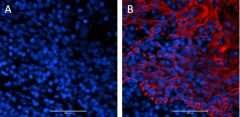
-

Formalin-fixed paraffin-embedded human tonsil tissue stained with purified Alexa Fluor® 594 anti-Pan-Cytokeratin (clone AE-1/AE-3). Following antigen retrieval using Sodium Citrate H.I.E.R. (Cat. No. 928502), tissue was incubated with (panel B) or without (panel A) 5.0 µg/mL of the primary antibody overnight at 4°C. Nuclei were counterstained with DAPI (blue) and the slide was mounted with ProLong™ Gold Antifade Mountant. The image was captured with a 40X objective. Scale: 50 µm -

MCF7 cells were fixed with 4% paraformaldehyde, permeabilized with 0.5% Triton X-100, and blocked with 5% FBS for 60 minutes. Cells were then intracellularly stained with Alexa Fluor® 594 mouse IgG1, κ isotype control (Cat No. 400174) (panel A) or Alexa Fluor® 594 anti-Pan-Cytokeratin (clone AE-1/AE-3) (panel B) overnight at 4°C. Nuclei were counterstained with DAPI and the image was captured with a 60X objective. Scale: 50 µm -

MCF7 cells (positive control) (closed histogram), and Jurkat cells (negative control) (open histogram) were fixed and permeabilized using Cyto-Fast Fix/Perm Buffer (Cat. No. 426803) and intracellularly stained with anti-Pan-Cytokeratin (clone AE-1/AE-3) Alexa Fluor® 594, or mouse IgG1, κ Alexa Fluor® 594 isotype control (open histogram, dashed line is representative for both Jurkat and MCF7 cells) (Cat No. 400174).
| Cat # | Size | Price | Quantity Check Availability | Save | ||
|---|---|---|---|---|---|---|
| 914205 | 25 µg | £103 | ||||
| 914206 | 100 µg | £192 | ||||
AE-1 immunoreacts with an antigenic determinant present on most of the subfamily A cytokeratins, including cytokeratins with molecular weights of 56.5, 50, 48 and 40 kD. AE-3 reacts with an antigenic determinant shared by the subfamily B cytokeratins including cytokeratins with molecular weights of of 64, 59, 58, 56, and 52 kD.
Product DetailsProduct Details
- Verified Reactivity
- Human, Rat
- Reported Reactivity
- Dog, Non-Human Primate
- Antibody Type
- Monoclonal
- Host Species
- Mouse
- Immunogen
- This antibody was developed using human epidermal keratins.
- Formulation
- Phosphate-buffered solution, pH 7.2, containing 0.09% sodium azide
- Preparation
- The antibody was purified by affinity chromatography and conjugated with Alexa Fluor® 594 under optimal conditions.
- Concentration
- 0.5 mg/mL
- Storage & Handling
- The antibody solution should be stored undiluted between 2°C and 8°C, and protected from prolonged exposure to light. Do not freeze.
- Application
-
IHC-P - Quality tested
ICC, ICFC - Verified - Recommended Usage
-
Each lot of this antibody is quality control tested by formalin-fixed paraffin-embedded immunohistochemical staining. For immunohistochemistry on formalin-fixed paraffin-embedded tissue sections, a concentration range of 5.0 - 10.0 µg/mL is suggested. For immunocytochemistry, a concentration range of 1.25 - 5.0 μg/mL is recommended. For flow cytometric staining, the suggested use of this reagent is ≤ 0.125 µg per million cells in 100 µL volume. It is recommended that the reagent be titrated for optimal performance for each application.
* Alexa Fluor® 594 has an excitation maximum of 590 nm, and a maximum emission of 617 nm.
Alexa Fluor® and Pacific Blue™ are trademarks of Life Technologies Corporation.
View full statement regarding label licenses - RRID
-
AB_2924628 (BioLegend Cat. No. 914205)
AB_2924628 (BioLegend Cat. No. 914206)
Antigen Details
- Biology Area
- Cell Biology, Cell Motility/Cytoskeleton/Structure, Neuroscience, Neuroscience Cell Markers
- Molecular Family
- Intermediate Filaments
- Gene ID
- NA
- UniProt
- View information about Pan-Cytokeratin on UniProt.org
Related Pages & Pathways
Pages
Related FAQs
Other Formats
View All Pan-Cytokeratin Reagents Request Custom Conjugation| Description | Clone | Applications |
|---|---|---|
| Purified anti-Pan-Cytokeratin | AE-1/AE-3 | IHC-P |
| Alexa Fluor® 594 anti-Pan-Cytokeratin | AE-1/AE-3 | IHC-P,ICC,ICFC |
| TotalSeq™-Bn1301 anti-Pan-Cytokeratin | AE-1/AE-3 | SB |
| PerCP/Cyanine5.5 anti-Pan-Cytokeratin | AE-1/AE-3 | ICFC,SB |
| Alexa Fluor® 647 anti-Pan-Cytokeratin Antibody | AE-1/AE-3 | IHC-P,ICC,ICFC |
| Alexa Fluor® 488 anti-Pan-Cytokeratin | AE-1/AE-3 | IHC-P,ICC,ICFC |
Customers Also Purchased
Compare Data Across All Formats
This data display is provided for general comparisons between formats.
Your actual data may vary due to variations in samples, target cells, instruments and their settings, staining conditions, and other factors.
If you need assistance with selecting the best format contact our expert technical support team.
-
Purified anti-Pan-Cytokeratin
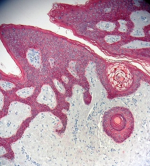
IHC staining of purified anti-Pan-Cytokeratin antibody (clon... 
Formalin-fixed paraffin-embedded human tonsil treated with a... -
Alexa Fluor® 594 anti-Pan-Cytokeratin

Formalin-fixed paraffin-embedded human tonsil tissue stained... 
MCF7 cells were fixed with 4% paraformaldehyde, permeabilize... 
MCF7 cells (positive control) (closed histogram), and Jurkat... -
TotalSeq™-Bn1301 anti-Pan-Cytokeratin
-
PerCP/Cyanine5.5 anti-Pan-Cytokeratin

MCF-7 cells (positive cell line, solid histogram) were fixed... 
Jurkat cells (negative cell line, solid histogram) were fixe... 
Multiplexed IHC staining of PerCP/Cyanine5.5 anti-Pan-Cytoke... -
Alexa Fluor® 647 anti-Pan-Cytokeratin Antibody

MCF7 cells were fixed and permeabilized with 100% ice-cold m... 
IHC staining of Alexa Fluor® 647 anti-Pan Cytokeratin (clone... 
MCF-7 cells (positive cell line, filled histogram) and Jurka... -
Alexa Fluor® 488 anti-Pan-Cytokeratin

MCF7 cells were fixed and permeabilized with 100% ice-cold m... 
IHC staining of Alexa Fluor® 488 anti-Pan Cytokeratin (clone... 
MCF-7 cells (positive cell line, filled histogram) were fixe... 
Jurkat cells (negative cell line, filled histogram) were fix...
 Login / Register
Login / Register 










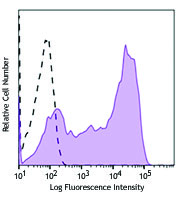
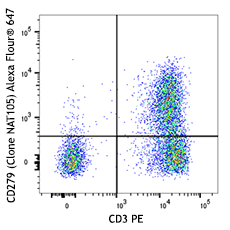

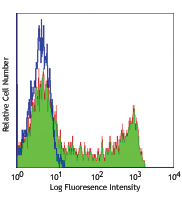



Follow Us